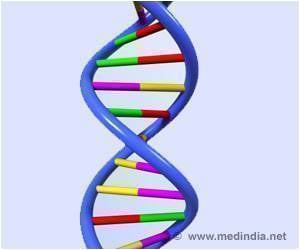Novel tool developed by scientists could help disease trackers find patterns in those overlays that could offer clues to the causes of and possible treatments for complex genetic conditions.

Feinberg says it has long been known that individual genetic variants in sections of DNA that don''t contain blueprints for proteins (once thought of as "junk DNA") seem to alter the quantity of proteins produced far afield. That phenomenon has made it very hard for researchers to pinpoint the source of some genetic diseases or targets for their treatment. This study, Feinberg says, shows that these genetic variants may be acting on distant protein-forming genes by influencing epigenetic tags, or chemical add-ons, atop the DNA.
Feinberg; co-leader Dani Fallin, Ph.D., professor and chair of the Department of Mental Health at the Bloomberg School of Public Health and director of the Wendy Klag Center for Autism and Developmental Disabilities; and their team analyzed genetic data from hundreds of healthy participants in three studies to first figure out what a normal epigenetic pattern looks like. Although it''s now common to compare the genomes of healthy and sick populations to identify predispositions for diseases, it has not been possible to compare epigenomes this way. The researchers zoomed in on one type of epigenetic change, the attachment of a chemical tag called a methyl group to a particular site on DNA. Known as methylation, these tags affect whether genes produce any protein, and if so, how much.
The team then looked for the relationship between the resulting epigenetic data and genetic data. Human genetic code is marked by telltale blocks of DNA that children tend to inherit from their parents in unbroken chunks called haplotypes. One of these blocks is often fingered as a suspect when a genetic disease arises. However, since the blocks are comprised of hundreds of thousands of "letters" of DNA code, researchers are not often able to identify the culprit mutation, or the protein-forming genes it affects, which may lie somewhere else in the block.
Epigenetic signatures like methylation patterns also occur in blocks, which the team dubbed "GeMes," for methylation blocks controlled by genes. The researchers found that the GeMes overlapped with the long genetic blocks but were much shorter.
That led them to suspect that the protein-coding genes turned on or off by those tags must be at the root of the disease associated with a particular genetic variant found elsewhere in the block.
Advertisement
"These corresponding genetic and epigenetic maps provide new insights about the architecture of the genome and its regulatory epigenetic marks. This can inform the integration of multiple types of data in future large-scale epidemiologic studies," says Fallin.
Advertisement
Other authors on the report are Xin Li, Martin J. Aryee and Amy Vandiver of The Johns Hopkins University; Tomas J. Ekstrom, Leonid Padyukov and Lars Klareskog of the Karolinska Institutet and University Hospital; and Ann Zenobia Moore, Toshiko Tanaka and Luigi Ferrucci of the National Institute on Aging.
This work was supported by the National Human Genome Research Institute (grant number HG003233), the National Institute on Aging (grant number AG042187), Swedish AFA Insurance grants, the Swedish Foundation for Strategic Research and the European Research Council. The Baltimore Longitudinal Study of Aging was supported in part by the Intramural Research Program of the NIH''s National Institute on Aging. A portion of that support was through a research and development contract with MedStar Health Research Institute.
Source-Newswise










